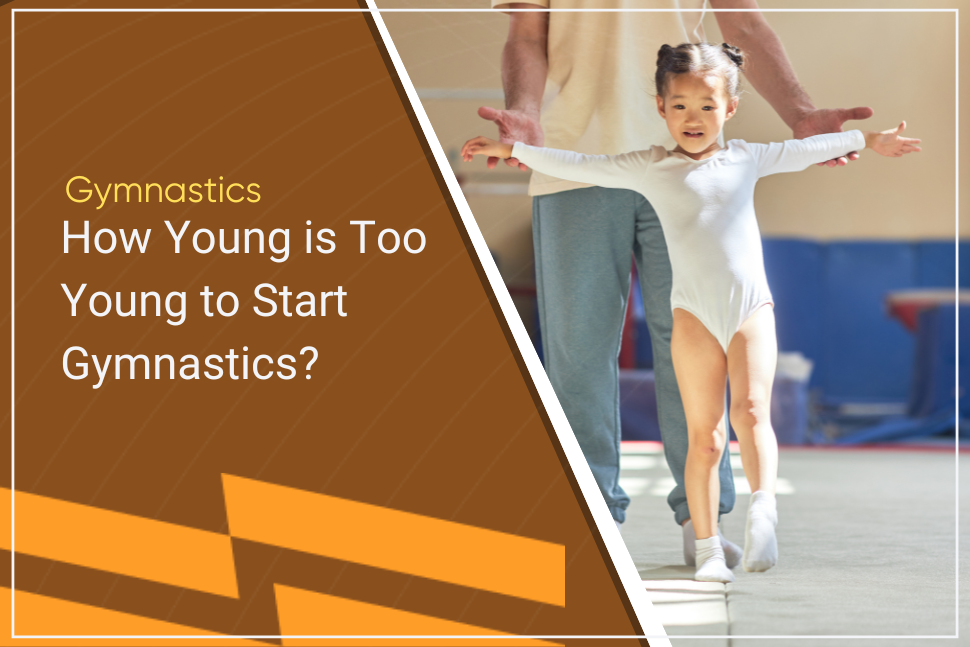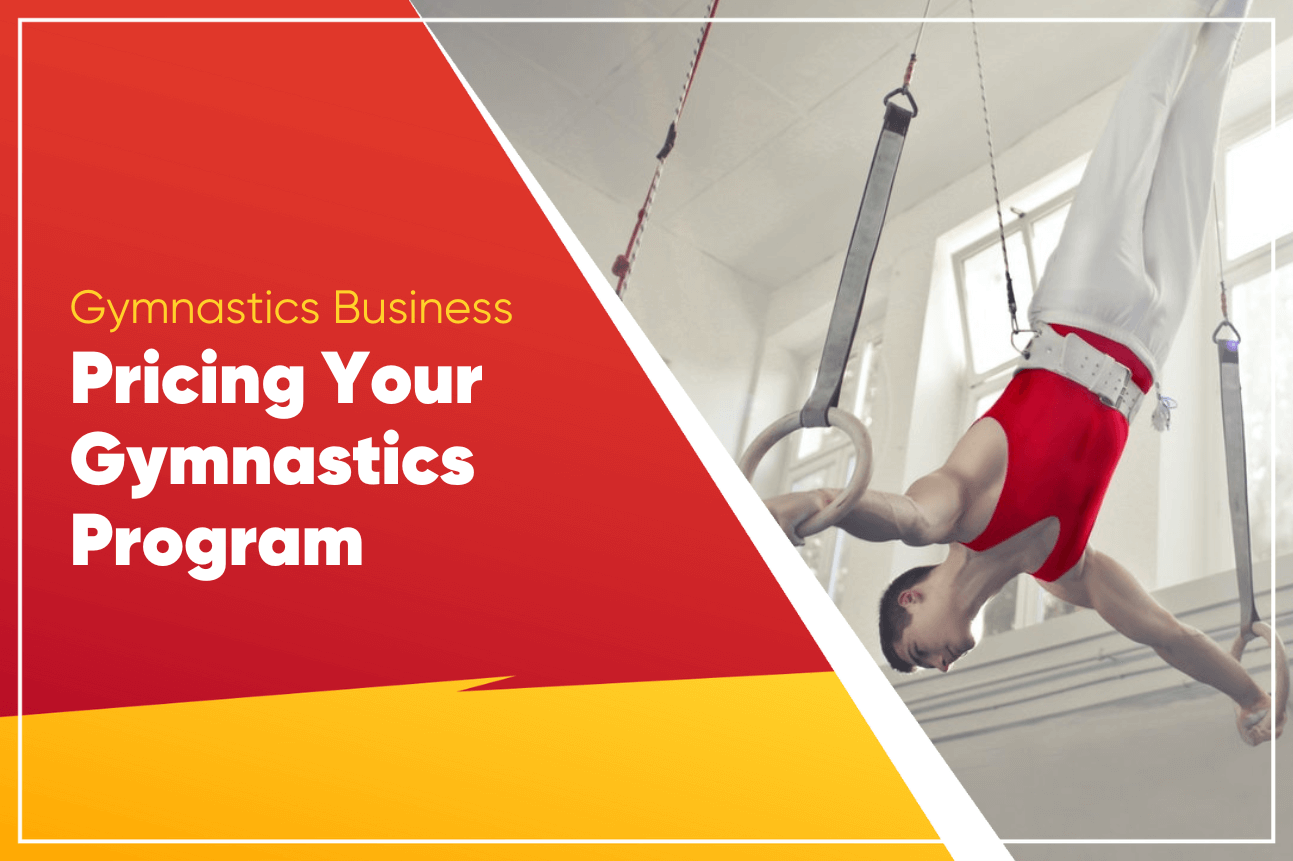How Young is Too Young for Toddlers to Begin Gymnastics?

Getting your toddler started with sport gymnastics classes is an exciting milestone.
As a parent, you might be eager to enroll your little one as soon as possible, but it’s natural to wonder: how young is too young for toddlers to begin gymnastics?
Is it beneficial for kids to start gymnastics classes from such a young age?
In this article, we’ll explore the benefits and potential drawbacks of starting gymnastics at a young age. We’ll also discuss how to ensure that a program matches your child's physical and emotional needs while considering their developmental readiness.
Understanding these factors will help you determine the best age to start gymnastics.
Benefits of Learning Gymnastics at a Young Age
There are many benefits to beginning to learn gymnastics training as little kids, including increased skill levels, well being, and overall sport success.
Most children don't play other sports, but kids that do will have an early start athletic success and even reaching a competitive level in sports, whether competitive gymnastics or other sports. Many coaches attest to the gymnastics training background of their best athletes.
Physical Benefits
Enrolling your toddler in a gymnastics program will help lay the foundation for their physical development. Kids will learn to develop basic movement skills, including running, jumping, and throwing, which are vital for motor skill development.
Gymnastics will also improve your kid's flexibility, balance, and coordination. These skills will help the child perform a wide range of motor activities with confidence. At the same time, overall fitness and strength levels will be boosted, setting the stage for a healthy lifestyle.
Cognitive Benefits
Gymnastics activities develop critical thinking skills. They also help toddlers to refine their hand-eye coordination. Concentration and focus of kids is enhanced as they pay attention to instructions and learn to execute complex movement patterns.
Gymnastics also improves memory and spatial skills. This helps kids to navigate their physical environment more confidently.
Emotional Benefits
Participating in gymnastics builds self-confidence and self-esteem among little kids as they set goals and progressively master new skills. Kids also develop social skills, including sharing, taking turns, and working as a team. These are vital skills for everyday living.
Learning gymnastics at an early age also develops a positive attitude toward physical activity as kids learn to associate exercise with fun and personal development.
Is Your Child Ready to Start Gymnastics?
How to Determine if Your Child is Ready to Start Gymnastics Classes
For parents, determining whether your child is ready to start gymnastics involves looking at a few key factors. It is a young person's sport, but can you be too little for it?
First, consider your child’s physical abilities. Can they walk, run, and jump with ease? These fundamental skills are essential for participating in gymnastics activities. Additionally, assess the emotional readiness of younger children.
Is your child comfortable in new environments and with unfamiliar instructors? A child who feels at ease in these situations is more likely to enjoy and benefit from gymnastics classes.
Determining when to start gymnastics involves many factors. Another important factor is your child’s interest. Does your little one show a natural curiosity about physical activity and gymnastics? If your child enjoys moving around, climbing, or imitating gymnasts they see, this could be a sign that they’re ready to start formal training. Observing your child’s behavior and enthusiasm can provide valuable insights into their readiness.
To ensure you’re making the right decision, it’s helpful to consult with a pediatrician or gymnastics instructor. They can offer professional guidance based on your child’s developmental stage.
Consider enrolling your child in a parent-toddler class or an introductory gymnastics class. These classes offer a gentle introduction to the sport and allow you to see how your child responds to a structured gymnastics environment.
Clear Signs of Readiness for Gymnastics Classes
When determining your child’s readiness, assess their ability to follow simple instructions and take turns. They should show an interest in physical activity and gymnastics and be able to carry out basic physical skills, such as running, jumping, and balancing. If they can confidently do these things, it indicates that they have the required coordination to join a gym class.
Choosing the Right Gymnastics Class
Having decided that it’s time to enroll your child in a gym class, you must find a provider who aligns with your child’s needs and development. Here are the key considerations.
What to Look for in a Gymnastics Class
Look for qualified instructors with experience working with young children. They should understand the unique needs of toddlers and create a positive, supportive environment. It's best of young kids to begin training in a fun and safe environment.
The classes should be conducted in a fun, safe, and engaging environment for your toddler. They should use age-appropriate equipment and emphasize fundamental movement skills. When in doubt, tumbling classes are a great place to start.
How to Find a Great Gymnastics Class
Start by researching local gymnastics programs and instructors to see what options are available in your area. Reading reviews and asking for referrals from friends, family, or other parents will give you valuable insights into the quality of the programs.
Having identified a potential studio, ask if you can watch a class or have a trial session. This will let you assess first hand whether or not the program meets your expectations.
Introductory gymnastics classes are a surefire bet when it comes to a proper introduction for kids to the sport.
Importance of Qualified Coaches and Safe Facilities
Qualified coaches deliver expert instruction and guidance for your toddler, ensuring that your child learns proper techniques and stays motivated.
A safe learning environment prevents injuries and promotes healthy physical development so your child can progress confidently and enjoy their gymnastics experience.

Preparing Your Child for Gymnastics
Building Strength and Flexibility
Help your child build strength and flexibility by promoting regular physical activities like running, jumping, and physical play. Add stretching and flexibility exercises into their daily routine. Make sure, too, that your child follows a balanced diet rich in nutrients to promote high energy levels and support physical development.
Developing Coordination and Balance
To develop balance and coordination consider setting up an obstacle course or using balance beams at home. Have them practice fundamental movements such as running, jumping, and throwing. Make use of play-based activities that foster a fun, exciting environment.
Encouraging a Positive Attitude
Focus on praising effort and progress, rather than just the results, to build your child’s confidence and resilience. Emphasize the importance of fun and enjoyment in every activity, helping them associate gymnastics with positive experiences. Encourage your child to try new things and take risks, teaching them that learning and growth come from stepping out of their comfort zone.
What to Expect in a Gymnastics Class
Typical Gymnastics Moves for Kids
Gymnastics for young children focuses on building foundational movement through fun and engaging movements. Some typical gymnastics moves kids will learn include forward and backward rolls, which help develop body awareness and control. Cartwheels and handstands are also common, as they introduce balance and coordination while encouraging confidence in inverted positions.
Balancing and jumping exercises are integral to gymnastics training. They teach children how to maintain stability and control while moving through space. As your child progresses, these moves form the building blocks for more advanced gymnastics.
Class Structure and Format
Classes typically begin with warm-up and stretching exercises to prepare the body for physical activity and prevent injuries. This is followed by the instruction and practice of gymnastics. Finally, the class concludes with a cool-down and review of motor skills learned. This helps reinforce what was practiced and ensures that children leave the session feeling accomplished and ready for the next challenge.
Teacher Qualifications and Experience
Look for instructors with experience working with little children. These instructors will understand the unique needs and capabilities of toddlers and will be able to create a supportive and engaging learning environment. Instructors must be certified in gymnastics instruction and first aid. To find the best fit for your child, I recommend observing a class or scheduling a trial session to see how the instructor interacts with the children and how well your child responds to their teaching style.
Safety Concerns for Little Gymnasts
Common Injuries
Common injuries associated with gymnastics include sprains and strains, which can occur from improper technique or overexertion, broken bones, often resulting from falls or hard landings, and concussions, which can happen due to impacts during flips or falls.
Children are most prone to these when they start gymnastics, but injuries can be avoided with a well-designed gymnastics program and increased body awareness.
Prevention Strategies
Warm-up and stretching exercises are vital to prepare children and their muscles and joints for physical activity, reducing the likelihood of strains and sprains. Ensure that your child receives proper instruction and supervision from qualified instructors.
The use of safety equipment, such as mats to cushion falls and spotters to assist with difficult moves, is also essential for a safe gymnastics experience.
Safety Equipment and Facilities
The facility needs to be clean and well-maintained, as this reduces the risk of accidents caused by slippery floors or faulty equipment. The gym should be equipped with safety equipment, including thick mats and spotters who can provide hands-on assistance during challenging exercises.
Instructors should be certified in first aid and CPR, so they are prepared to respond appropriately in case of an emergency.
The Role of Parents in Gymnastics
Remember that your kids are not going to become a competitive gymnast or a professional gymnast immediately. Given them room to grow, explore, and enjoy themselves.
Kids develop best when they are afforded this luxury, versus more serious training starting out.
Supporting Your Child’s Gymnastics Journey
To encourage your child’s gymnastics journey, you need to be actively engaged. Attend classes when you can, cheering your child on without being over the top.
Encourage your child to practice at home by creating a safe space for them to work on basic movements and exercises.
Communicate with instructors regularly to stay informed about your child’s progress and any areas they might need extra support.
Communicating with Coaches and Teachers
As parents, you should ask questions and provide feedback about your child’s performance and any concerns you may have. It’s also important for parents to share any concerns or issues with the instructor as they arise, so they can address them promptly. By working together, parent and teacher, you can ensure that your child receives the guidance and support they need to thrive in gymnastics.
Encouraging a Growth Mindset
Fostering a growth mindset in your child from a young age is key to their success in gymnastics and beyond. Praise their effort and progress rather than solely focusing on results. This helps your child understand that improvement comes from hard work and persistence.
Emphasize the importance of learning and improvement, reinforcing that mistakes are a natural part of the learning process. Encourage your child to take risks and try new things, which builds resilience and a positive attitude toward challenges.
Conclusion
There is no definitive answer to the question of how young is too young for kids to start gymnastics classes. It all depends on your assessment of your child's physical, emotional, and cognitive readiness. Once you've determined that your toddler is ready, do your research to find the best fit.
Remember, the goal is to ensure that your child’s introduction to gymnastics is both enjoyable and supportive of their overall development, laying the foundation for a positive and enriching experience.
Gym management software that frees up your time and helps you grow.
Simplified billing, enrollment, student management, and marketing features that help you grow your gym or martial arts school.




